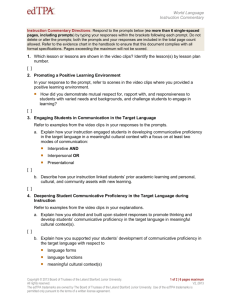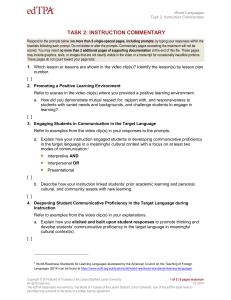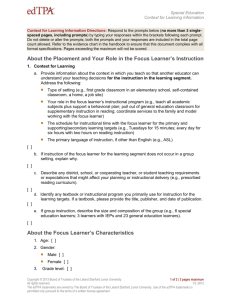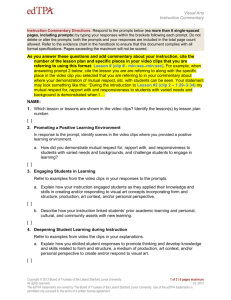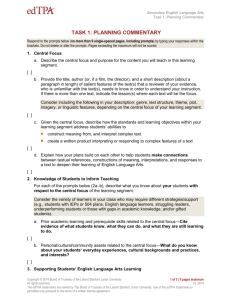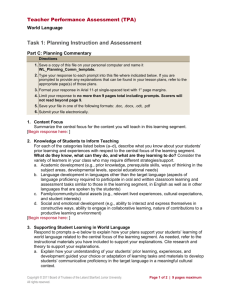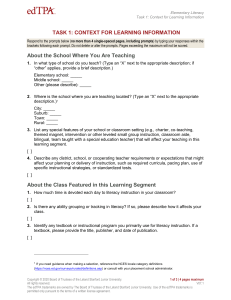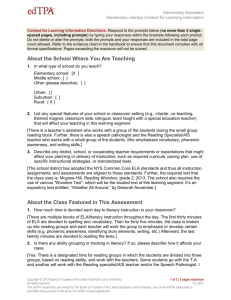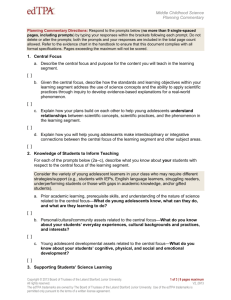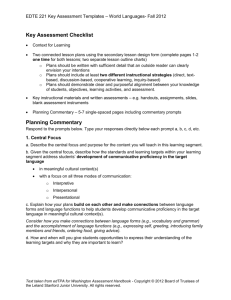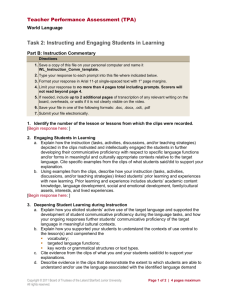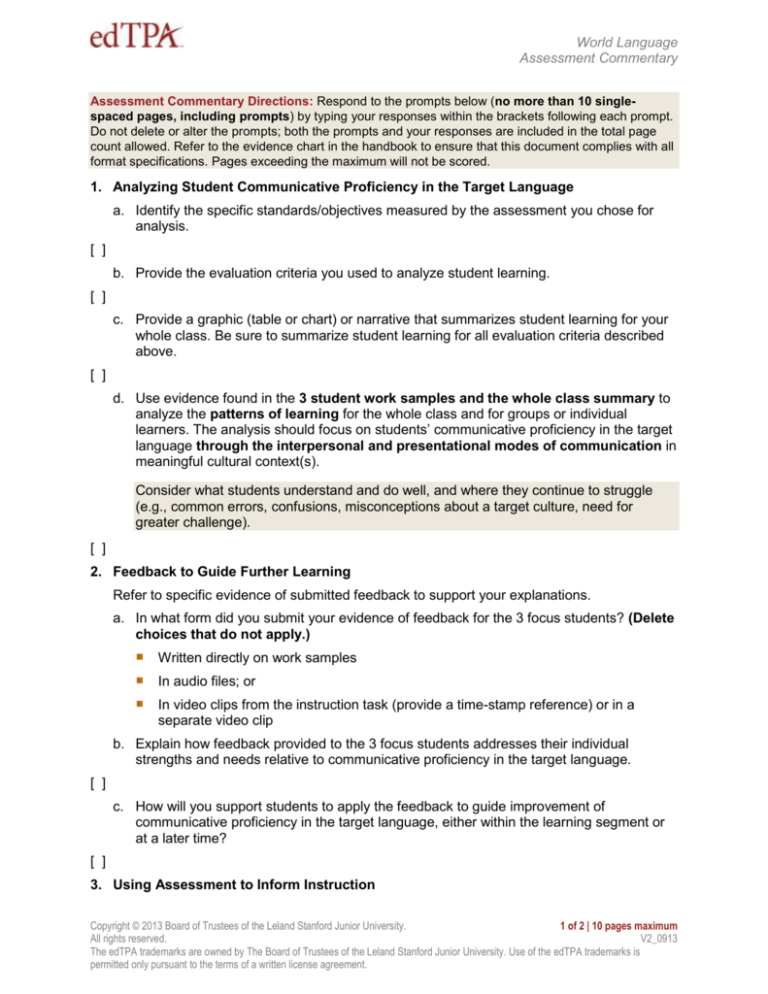
World Language
Assessment Commentary
Assessment Commentary Directions: Respond to the prompts below (no more than 10 singlespaced pages, including prompts) by typing your responses within the brackets following each prompt.
Do not delete or alter the prompts; both the prompts and your responses are included in the total page
count allowed. Refer to the evidence chart in the handbook to ensure that this document complies with all
format specifications. Pages exceeding the maximum will not be scored.
1. Analyzing Student Communicative Proficiency in the Target Language
a. Identify the specific standards/objectives measured by the assessment you chose for
analysis.
[ ]
b. Provide the evaluation criteria you used to analyze student learning.
[ ]
c. Provide a graphic (table or chart) or narrative that summarizes student learning for your
whole class. Be sure to summarize student learning for all evaluation criteria described
above.
[ ]
d. Use evidence found in the 3 student work samples and the whole class summary to
analyze the patterns of learning for the whole class and for groups or individual
learners. The analysis should focus on students’ communicative proficiency in the target
language through the interpersonal and presentational modes of communication in
meaningful cultural context(s).
Consider what students understand and do well, and where they continue to struggle
(e.g., common errors, confusions, misconceptions about a target culture, need for
greater challenge).
[ ]
2. Feedback to Guide Further Learning
Refer to specific evidence of submitted feedback to support your explanations.
a. In what form did you submit your evidence of feedback for the 3 focus students? (Delete
choices that do not apply.)
Written directly on work samples
In audio files; or
In video clips from the instruction task (provide a time-stamp reference) or in a
separate video clip
b. Explain how feedback provided to the 3 focus students addresses their individual
strengths and needs relative to communicative proficiency in the target language.
[ ]
c. How will you support students to apply the feedback to guide improvement of
communicative proficiency in the target language, either within the learning segment or
at a later time?
[ ]
3. Using Assessment to Inform Instruction
Copyright © 2013 Board of Trustees of the Leland Stanford Junior University.
1 of 2 | 10 pages maximum
All rights reserved.
V2_0913
The edTPA trademarks are owned by The Board of Trustees of the Leland Stanford Junior University. Use of the edTPA trademarks is
permitted only pursuant to the terms of a written license agreement.
World Language
Assessment Commentary
a. Based on your analysis of student learning presented in prompts 1c–d, describe next
steps for instruction
for the whole class
for the 3 focus students and other individuals/groups with specific needs
Consider the variety of learners in your class who may require different
strategies/support (e.g., students with IEPs, English language learners, readers who are
struggling in their first language, students at different levels of language proficiency,
students who are underperforming or those with gaps in academic knowledge, and/or
gifted students).
[ ]
b. Explain how these next steps follow from your analysis of student learning. Support your
explanation with principles from Second Language Acquisition research and/or theory.
[ ]
Copyright © 2013 Board of Trustees of the Leland Stanford Junior University.
2 of 2 | 10 pages maximum
All rights reserved.
V2_0913
The edTPA trademarks are owned by The Board of Trustees of the Leland Stanford Junior University. Use of the edTPA trademarks is
permitted only pursuant to the terms of a written license agreement.

